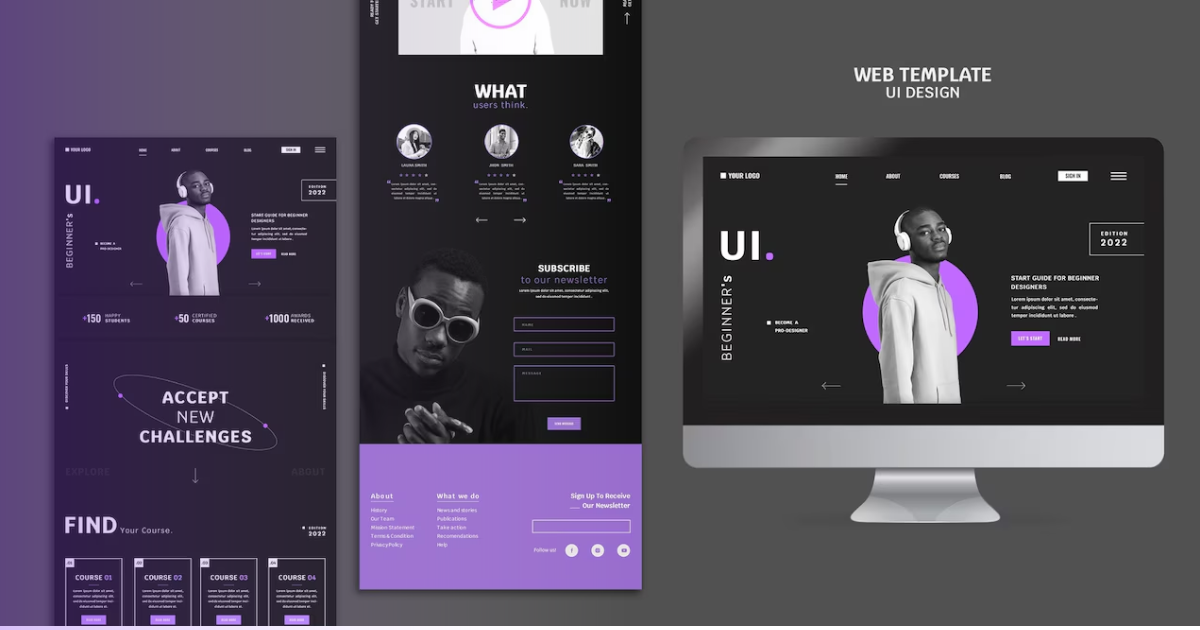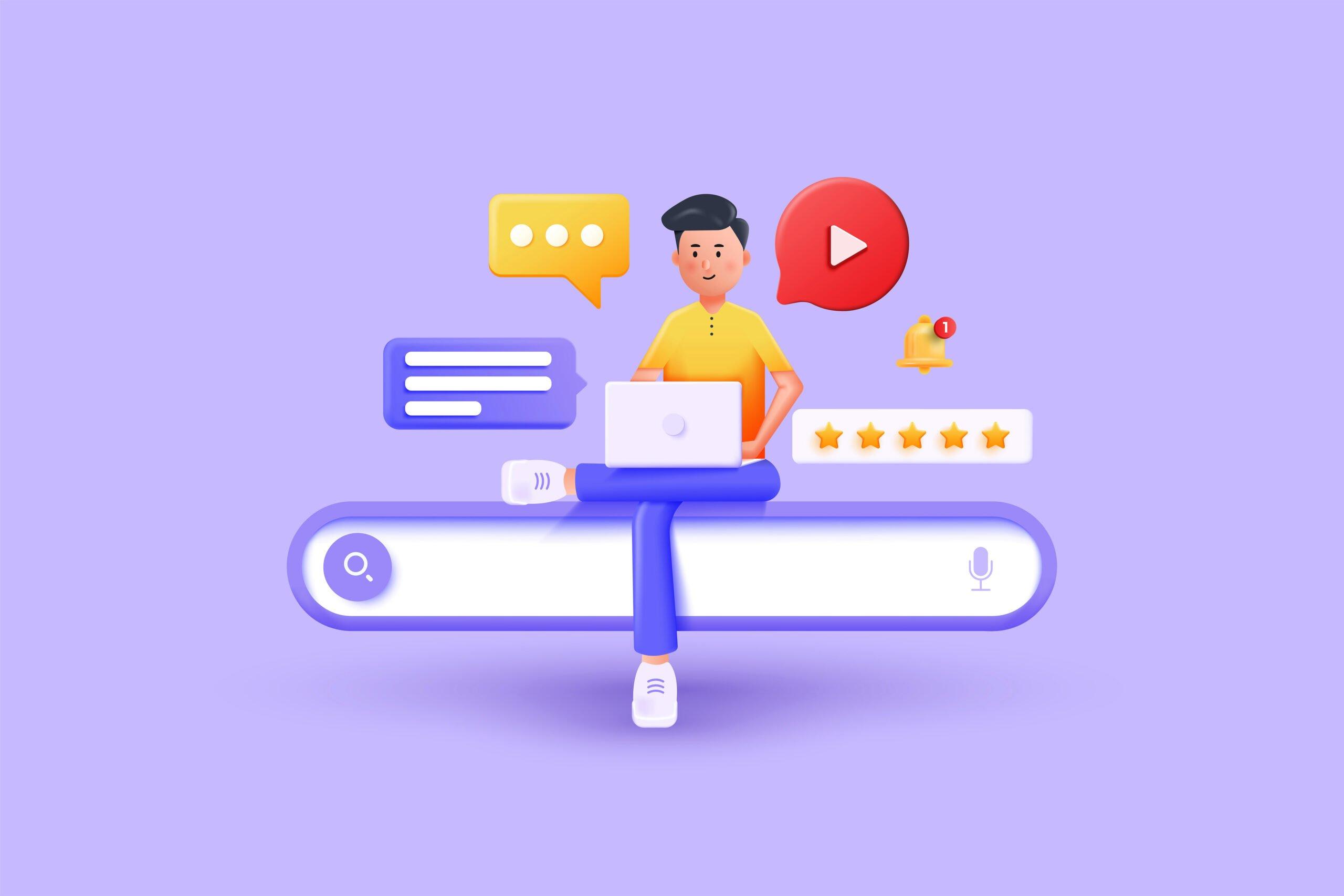Professional Aligned Position Web Design: Custom Websites Tailored to Your Business Needs
Professional Aligned Position Web Design: Custom Websites Tailored to Your Business Needs
Blog Article
The Very Best Kinds of Web Design to Boost Customer Experience and Engagement
In the ever-evolving landscape of electronic interaction, the effectiveness of Web style substantially influences user experience and interaction. Various style methods, such as minimalist, responsive, and interactive layouts, each offer special advantages that can accommodate diverse user requirements. Comprehending which kinds of website design best serve these goals can be essential for organizations intending to improve customer complete satisfaction and retention. Nonetheless, the concern remains: which layout aspects really resonate with individuals and foster significant involvement? The exploration of these principles exposes essential understandings that might redefine your approach to website design.
Minimalist Website Design
As digital landscapes end up being progressively messy, minimalist Web layout has become a powerful technique to boosting user experience. This design approach prioritizes simpleness, concentrating on necessary components while getting rid of unneeded interruptions. By making use of adequate white area, straightforward navigation, and a restricted color scheme, minimal layout fosters clearness and guides user interest to key web content.
The core principle of minimal Web style is to produce a seamless communication for individuals. By decreasing cognitive load, individuals can promptly comprehend info without feeling bewildered. This direct method not just enhances functionality but also encourages interaction, as site visitors are more most likely to explore a site that is aesthetically appealing and simple to navigate.
Additionally, minimalist design typically stresses typography and images, utilizing these aspects strategically to share messages efficiently. In essence, minimal Web design is not simply a trend; it is a thoughtful technique that recognizes the significance of user-centered design.
Responsive Web Style
In today's varied digital atmosphere, receptive Web layout has actually come to be essential for developing a smooth customer experience across a multitude of gadgets. As users accessibility web sites on mobile phones, laptops, tablets, and desktops, the ability of an internet site to adjust its format and material to various display sizes and resolutions is vital.
Responsive Web design employs adaptable grids, images, and CSS media queries to guarantee that Web material exists ideally, regardless of the device utilized. This technique not only improves the aesthetic allure of a web site however likewise considerably improves functionality. Users are most likely to involve with a site that uses a consistent experience, as it gets rid of the disappointment of having to zoom in or scroll exceedingly.
By taking on receptive layout, services can boost their presence and reach a broader target market. In recap, responsive Web layout is a fundamental method that improves individual experience, engagement, and general fulfillment.
Interactive Web Style
Receptive website design prepares for boosting customer experience, but interactive Web design takes this a step better by engaging customers in an extra vibrant means - Aligned Position Web Design. By including elements such as animations, clickable models, and real-time feedback, interactive Web style captivates customers, attracting them right into a richer surfing experience
This method not just promotes involvement yet also encourages individuals to check out material actively instead than passively eating it. Techniques such as gamification, where individuals gain rewards for completing tasks, can substantially improve the time invested in a site and improve general fulfillment. Furthermore, interactive features can simplify complex info, making it much more digestible and enjoyable.

Including interactive layout components can additionally bring about higher conversion prices, as users are most likely to involve with a site that proactively includes them. Aligned Position Web Design. Ultimately, interactive website design changes individual experiences right into unforgettable journeys, guaranteeing visit the website that site visitors return time after time
Flat Style
Characterized by its minimalistic method, flat layout stresses simpleness and functionality, removing away unneeded components and concentrating on crucial attributes. This design approach prioritizes use, guaranteeing that individuals can navigate user interfaces with simplicity and effectiveness. By employing a tidy aesthetic, level design eliminates the clutter often located in more luxuriant styles, thereby enhancing individual focus on web content and functionality.
The hallmark of flat design depends on its use of strong colors, basic typography, and geometric forms. These components add to a visually enticing interface that is both approachable and modern-day. In addition, level layout promotes a sense of clearness, permitting individuals to recognize important activities and info without interruption.
Furthermore, level design is particularly efficient in receptive website design, as its simpleness converts well throughout different gadgets and display dimensions. The absence of intricate textures and slopes decreases packing times, which is crucial for keeping user engagement. As electronic landscapes remain to progress, flat style continues to be an appropriate option for developing user-friendly internet sites that improve overall experience. By concentrating on vital attributes, flat design not only fulfills individual requirements but likewise encourages smooth interaction, making it a crucial element of efficient website index design techniques.
Flexible Website Design
Flexible Web layout customizes the customer experience by producing multiple taken care of designs tailored to different screen dimensions and gadgets. Unlike responsive layout, which fluidly changes a single layout, flexible style uses distinctive layouts for details breakpoints, making sure optimal discussion on different systems. This technique allows developers to concentrate on the one-of-a-kind attributes of each device, enhancing functionality by delivering precisely what customers need based upon their context.
One of the key advantages of adaptive Web layout is its capability to maximize tons times and performance. By serving tailored material and images that fit the user's device, sites can minimize information use and improve loading rates. This is particularly beneficial for individuals with slower links or restricted data plans.

Additionally, flexible layout assists in a much more regulated and regular branding experience. Since developers develop numerous layouts, they can make certain that the visual aspects straighten with the brand name's identification across various systems - Aligned Position Web Design. This leads to a natural individual experience, enhancing engagement and promoting user retention
Verdict
To conclude, the integration of minimalist, responsive, and interactive Web layout concepts significantly boosts user experience and interaction. Minimalist design promotes clearness and emphasis, while receptive layout guarantees adaptability throughout numerous devices, advertising ease of access. Interactive layout captivates individuals through dynamic aspects, encouraging expedition and personalization. Jointly, these layout approaches add to the creation of user-friendly environments that not just boost satisfaction yet also drive higher conversion prices, emphasizing their critical importance in contemporary website design strategies.

Minimal style promotes clarity and focus, while responsive design guarantees adaptability throughout numerous devices, promoting ease of access. Collectively, these layout comes close to contribute to the production of easy to use environments click for more info that not just improve contentment yet likewise drive greater conversion rates, underscoring their essential importance in modern Web layout methods.
Report this page